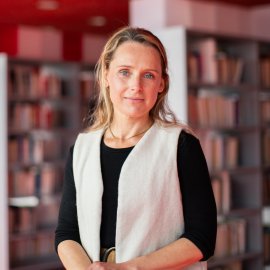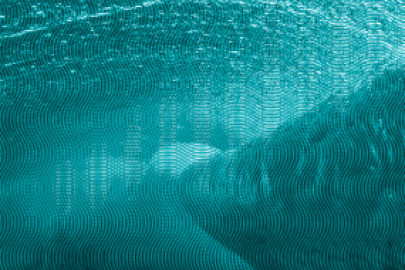Director 25-26

Fellow 2022-2023
Sophie Halart is an Art Historian and Assistant Professor at the Institute of Aesthetics, Pontificia Universidad Católica de Chile.
A French native living, she has been living in Chile for the past ten years. Halart holds a PhD in History of Art from University College London (UK), an M.A. in Cultural Industry from Goldsmiths College (UK) and a B.A. in History of Art and English Literature from the University of York (UK).
In 2021, Halart completed a postdoctoral research project on maternity, feminisms and materiality in contemporary Chilean art financed by a FONDECYT-Chile fellowship.
Her current research interests deal with artistic responses to climate change and the turn to affects and care in contemporary Latin American art.
Sophie Halart is deputy director of the Institute in 2024-2025.
About collegial management
See other team members
Reclaiming Landscape in the Extractive Zone : New Forms of Artistic Involvements with the Environment in Contemporary Chile.
This project analyzes the emergence of new forms of artistic involvements with the environment in contemporary Chile, examining the ways in which, at a time of ecological urgency, contemporary artists have had to come to terms with the limitations of established visual and narrative languages when addressing the conjoined effects of extractivism, colonialism and climate change on the country’s landscapes.
The project considers the stakes that such limitations have meant for the visual arts and identifies the existence of four artistic strategies in contemporary Chilean art which seek to articulate new modes of art making and spectatorship. From the Northern desert zone and its minerally charged landscapes dominated by the mining industry, to the agrobusiness-saturated Central Valley and its focus on monocultures, the eucalyptus wood industry of the Lake District and the disputed Mapuche territories of the South, these artistic involvements with local environments shape more material, embodied and open-ended forms of art making.
In turn, they also offer a renewed approach to spectatorship, shaping more collective and dialogical narratives as a way out of the aporia that is making – and experimenting – art in the Anthropocene.
2022 [2016] Sabotage Art: Politics and Iconoclasm in Contemporary Latin America (co-edited with Mara Polgovsky). New-York & London: Bloomsbury Academic.
2022 (forthcoming). “Parched Narratives: Rethinking Lament and Ruins in Chile’s Central Valley”, in Within and Beyond Chile: Notes on Contemporary Art and Visual Culture, edited by Florencia San Martin, Carla Macchiavello and Paula Solimano. Amherst: Amherst University Press.
2022 (forthcoming). “Gestaciones subversivas: maternidad y materialidad en las obras de Liliana Maresca y Ximena Zomosa”, in Intercambios transandinos, edited by Silvia Dolinko et al. Santiago: Ediciones Universidad Alberto Hurtado.
2020. A Water of a Hundred Eyes: Towards an Eco-Feminist Reconfiguration of Water in Recent Chilean Art”, in Liquid Ecologies in Latin American and Caribbean Art, edited by Lisa Blackmore and Liliana Gómez-Popescu. New York: Routledge, pp. 205 – 221.
2019. “Epidermal Cartographies: Skin as Map in Chilean Art (1979-1994)”, Oxford Art Journal (42:3), 283 – 305.
2018. “Liliana Porter’s Wrinkle”, “In Focus” Project, Tate Research.http://www.tate.org.uk/research/publications/in-focus/wrinkle/wrinkles-in-time




